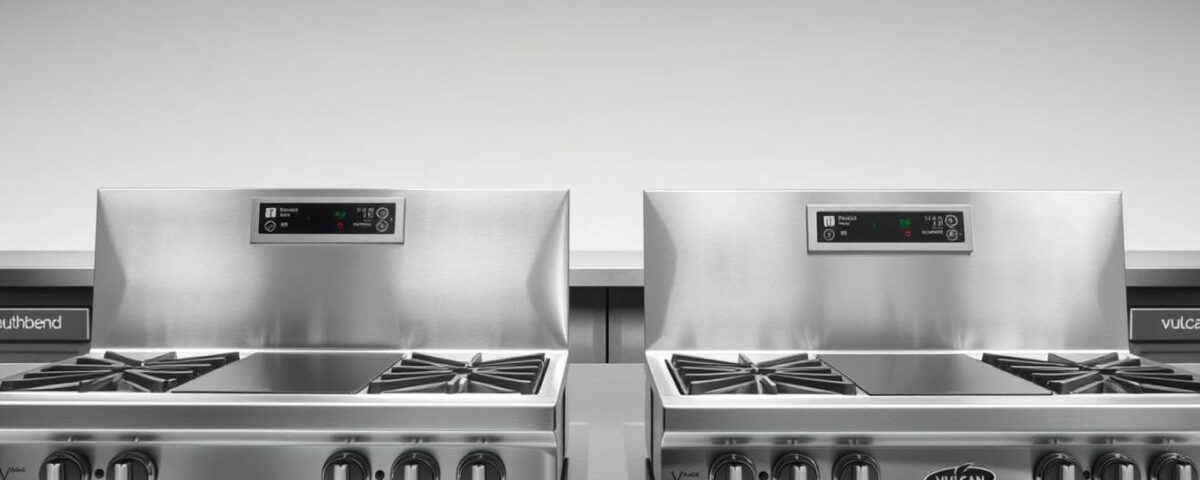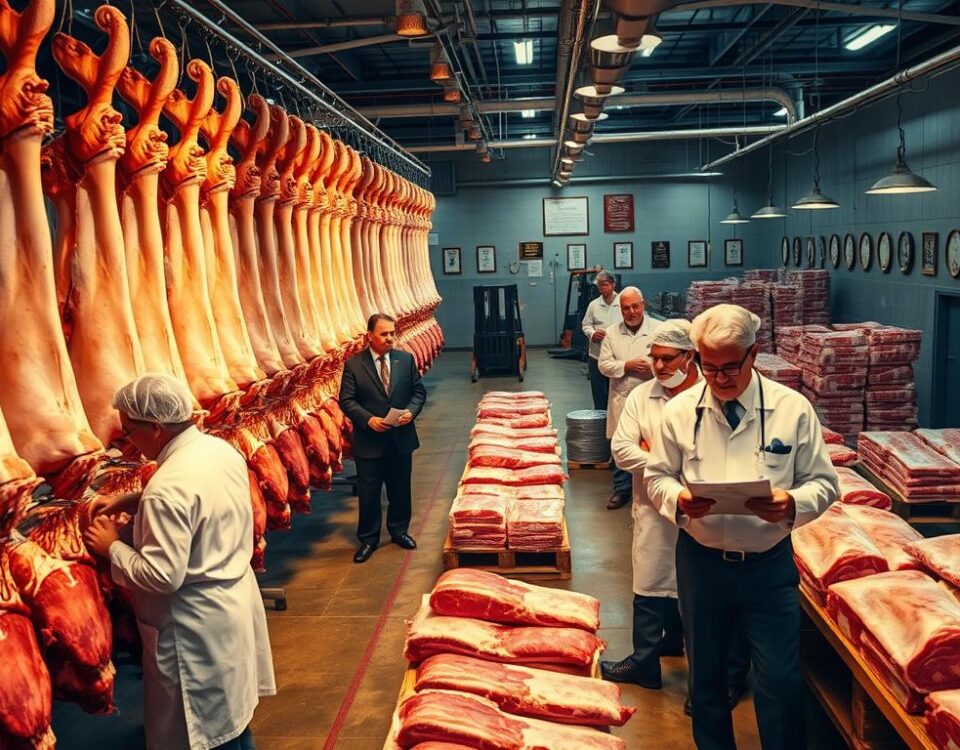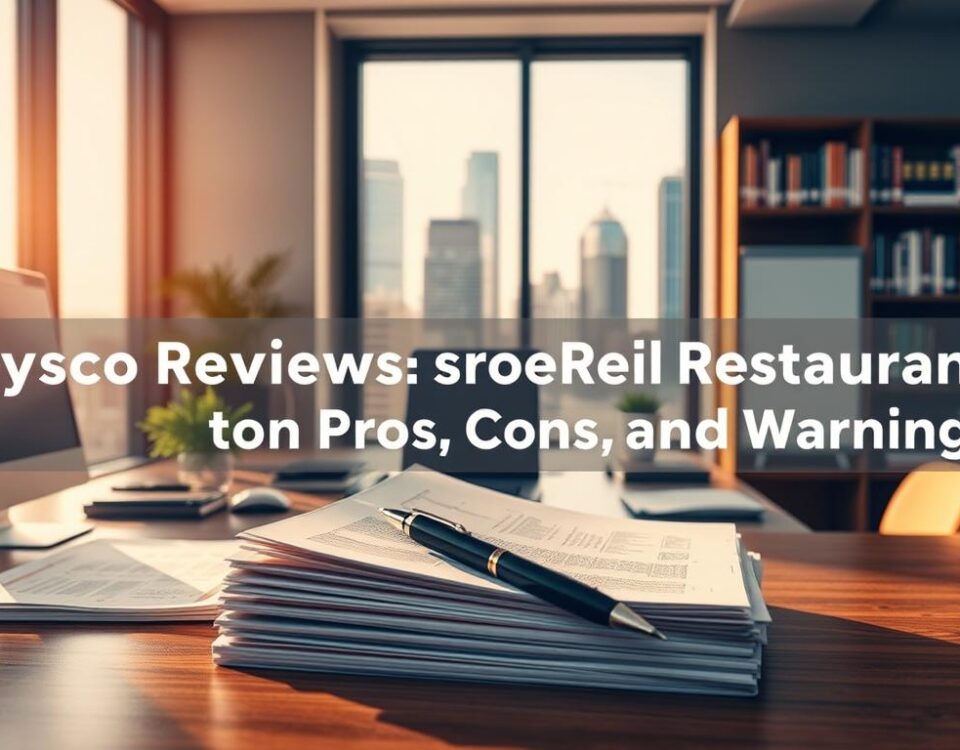
4 Mistakes Bakers Make When Choosing Spiral or Planetary Mixers
September 7, 2025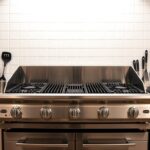
The Best Commercial Grill Setup for Maximizing Sales
September 8, 2025As a professional chef, I’ve experienced firsthand the impact a top-notch commercial range can have on a kitchen’s efficiency and output. With the average kitchen renovation costing upwards of $50,000, selecting the right cooking equipment is a critical decision that can make or break your culinary operation.
Did you know that a high-quality gas range can increase cooking speed by up to 30%? With both Southbend and Vulcan offering exceptional products, the choice between these industry leaders can be daunting. As we dive into this comparison, we’ll explore the key differences between their models, including oven performance and special features.
By examining real customer experiences and product specifications, we’ll uncover which brand reigns supreme for your 2025 kitchen upgrade. So, what’s the verdict: Southbend or Vulcan?
Key Takeaways
- Comparison of Southbend and Vulcan commercial ranges for 2025 kitchen upgrades
- Key factors to consider when choosing between the two brands
- Oven performance and special features of different models
- Real customer experiences and testimonials
- Final verdict on which brand is recommended for 2025 installations
Why I’m Comparing Southbend vs Vulcan for My Kitchen Upgrade
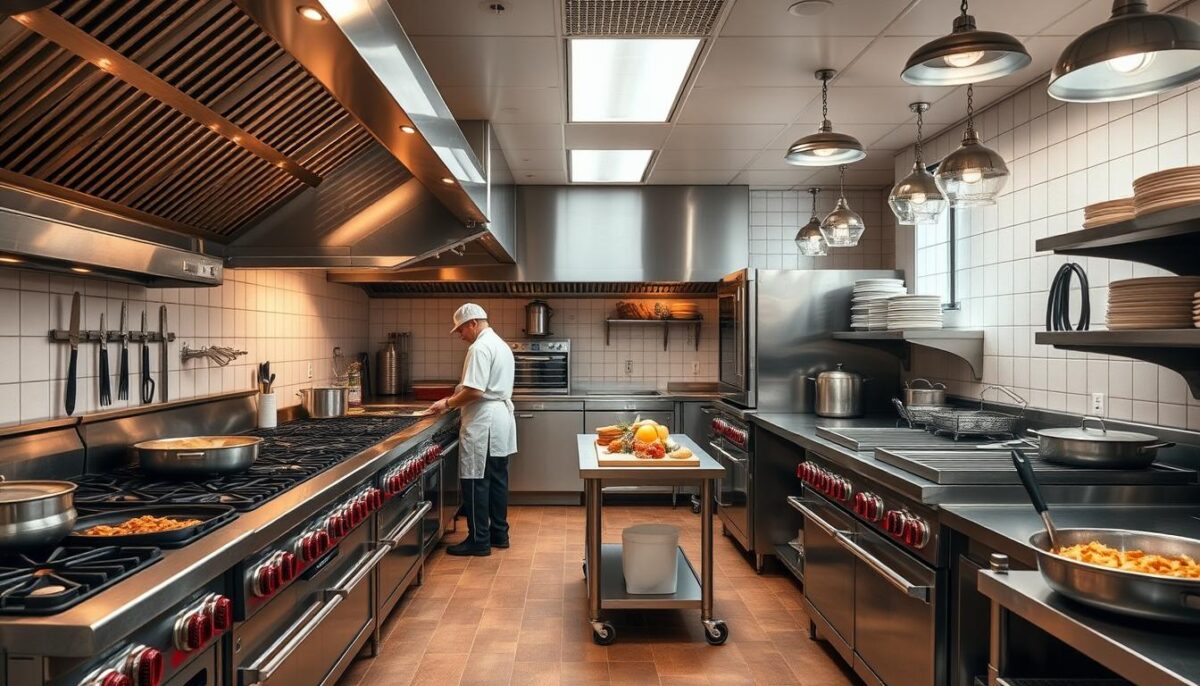
As I plan my kitchen upgrade for 2025, I’m faced with a crucial decision: choosing between Southbend and Vulcan commercial ranges. My specific cooking needs and volume requirements have led me to investigate commercial-grade equipment rather than residential options.
Both Southbend and Vulcan have established themselves as leaders in the commercial kitchen equipment industry. Southbend’s American-made heritage since 1898 and Vulcan’s reputation for innovation are significant factors in my decision-making process.
I’ve collected feedback from professional chefs, restaurant owners, and other commercial kitchen operators who have experience with both brands. This comparison will examine construction quality, performance metrics, configuration options, and value for money to help readers understand which brand might better suit their specific cooking style, menu offerings, and kitchen layout.
Southbend offers multiple levels of ranges, including the Ultimate and S-Series, which cater to different applications and budgets. The Ultimate series, made in the USA with all stainless steel construction, offers higher BTUs and a high-efficiency snap-action thermostat. The S-Series provides quality and versatility with many configuration options.
Making an informed decision when investing in a range that will be the centerpiece of my kitchen for many years to come is crucial. By comparing these two brands, I’ll be able to identify which one offers the best features, performance, and value for my kitchen upgrade.
Understanding Commercial Range Types: Restaurant vs. Heavy Duty
The heart of any commercial kitchen is its range, and understanding the differences between types is vital. Commercial ranges come in various configurations, each designed to meet specific kitchen needs. Whether you’re outfitting a small restaurant or a large institutional kitchen, choosing the right range is crucial.
Restaurant Ranges: The Workhorses for Small to Medium Kitchens
Restaurant ranges are designed for smaller to medium-sized kitchens that serve up to 150 people at a time. These ranges typically feature multiple burners, often up to 12 active burners, allowing for versatile cooking options. They are ideal for establishments that require flexibility in their cooking operations.
Heavy Duty Ranges: Built for High-Volume Operations
Heavy-duty ranges are engineered for larger kitchens that serve more than 150 people at a time. They are constructed with durable fittings, knobs, and accessories, and often feature fewer but more powerful burners, with BTU outputs reaching 30,000-35,000 BTUs per burner. This makes them suitable for high-volume operations like busy restaurants, hotels, and institutional settings.
Heavy-duty ranges can be installed “in battery” with other cooking equipment, creating a customized cooking line tailored to specific menu needs. While they come with a higher price point, they represent a worthwhile long-term investment for kitchens that demand high performance and durability.
Southbend vs Vulcan Comparison: Brand Heritage and Reputation
Southbend and Vulcan are two stalwarts in the commercial cooking equipment industry, with long histories that underscore their commitment to quality and innovation. Understanding their brand heritage and reputation can provide valuable insights for chefs and restaurateurs looking to invest in high-quality cooking equipment.
Southbend: American-Made Quality Since 1898
Southbend has been a benchmark for American-made quality since its inception in 1898. With over a century of experience, Southbend has established itself as a leader in the commercial cooking equipment industry. Their products are known for their durability, performance, and adherence to high manufacturing standards. Southbend’s commitment to quality is reflected in its stove and oven models, which are designed to meet the rigorous demands of commercial kitchens.
The brand’s focus on innovation and customer satisfaction has earned it a loyal customer base. Southbend’s equipment is designed to provide consistent performance, ensuring that chefs can rely on their products to deliver high-quality dishes time and again.
Vulcan: Industry Leader in Commercial Cooking Equipment
Vulcan has also made a significant impact in the commercial cooking equipment industry, with a reputation for designing equipment that meets the practical needs of working chefs. The brand’s Endurance Range design is a testament to its commitment to innovation, offering more than 300 possible configurations to match specific workflow and menu requirements. 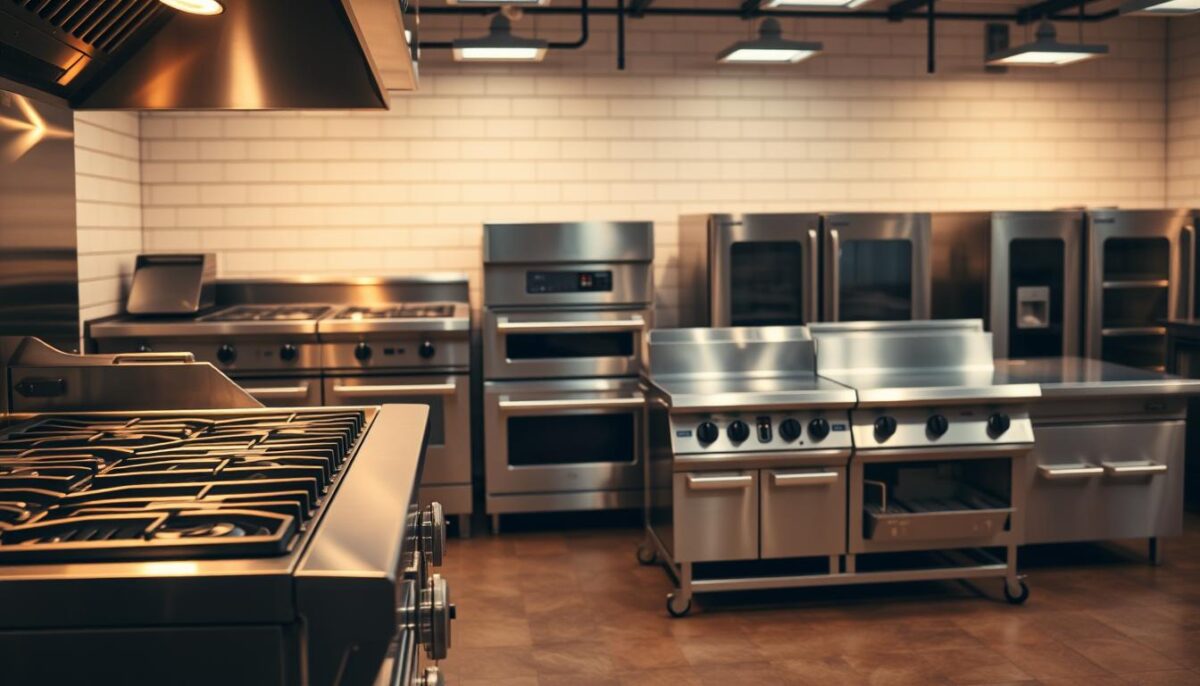
Vulcan’s approach to product development is influenced by culinary professionals, ensuring that their equipment enhances kitchen efficiency and productivity. Features like the Flame Safety Pilot System, which automatically shuts off gas to a module when it detects that a pilot light has gone out, demonstrate Vulcan’s focus on safety and performance.
| Brand | Established | Notable Feature |
|---|---|---|
| Southbend | 1898 | American-made quality |
| Vulcan | – | Modular Endurance Range design |
Construction Quality and Durability Face-Off
When it comes to commercial kitchen equipment, the construction quality and durability of a range are paramount. Both Southbend and Vulcan are renowned for their high-quality products, but how do they stack up against each other?
Southbend’s Stainless Steel Construction and Build Quality
Southbend ranges are known for their stainless steel construction, which provides a robust and durable cooking solution. The use of high-grade stainless steel ensures that their ranges can withstand the rigors of a busy kitchen. As Levi N from Atlanta noted, “Excellent. It is reliable and powerful. Works exactly as described. High-quality build.” This sentiment is echoed by many customers who appreciate the reliability and performance of Southbend’s products.
The stainless steel construction not only adds to the aesthetic appeal but also makes maintenance easier, giving chefs more time to focus on cooking rather than cleaning. Southbend’s attention to detail in their range’s build quality is evident in the seamless construction of their ovens and the sturdy design of their burners.
Vulcan’s Durability and Long-Term Performance
Vulcan ranges are built to last, with a reputation for durability that’s hard to match. Their use of commercial-grade materials and robust construction techniques ensures that their ranges can handle the demands of high-volume kitchens. Lucas Z from San Francisco praised his Vulcan range, saying, “Very happy with this purchase. We can do a lot of cooking on this range. It forms a large cooking station where we crank out many of our menu items.”
Vulcan’s focus on durability is also reflected in their design choices, such as the construction of burner assemblies and oven door hinges, which are designed to withstand heavy use. While Ava M from Portland mentioned occasional issues with low heat control, the overall consensus among customers is that Vulcan ranges offer long-term reliability and performance.
Performance Comparison: BTU Output and Cooking Power
When it comes to commercial cooking, the performance of your range can make or break your kitchen’s efficiency. Both Southbend and Vulcan offer high-performance ranges, but their approaches to burner technology and flame control differ significantly.
Southbend’s Burner Technology and Heat Distribution
Southbend’s commercial ranges are known for their robust burner technology, designed to provide consistent heat distribution across the cooking surface. With a focus on durability and performance, Southbend’s burners are engineered to withstand the rigors of high-volume commercial kitchens. Their ranges often feature powerful burners capable of delivering high BTU outputs, making them suitable for demanding cooking tasks. Customers praise Southbend’s ranges for their fast heating times and reliable performance, which are crucial for kitchens that need to cook large quantities quickly.
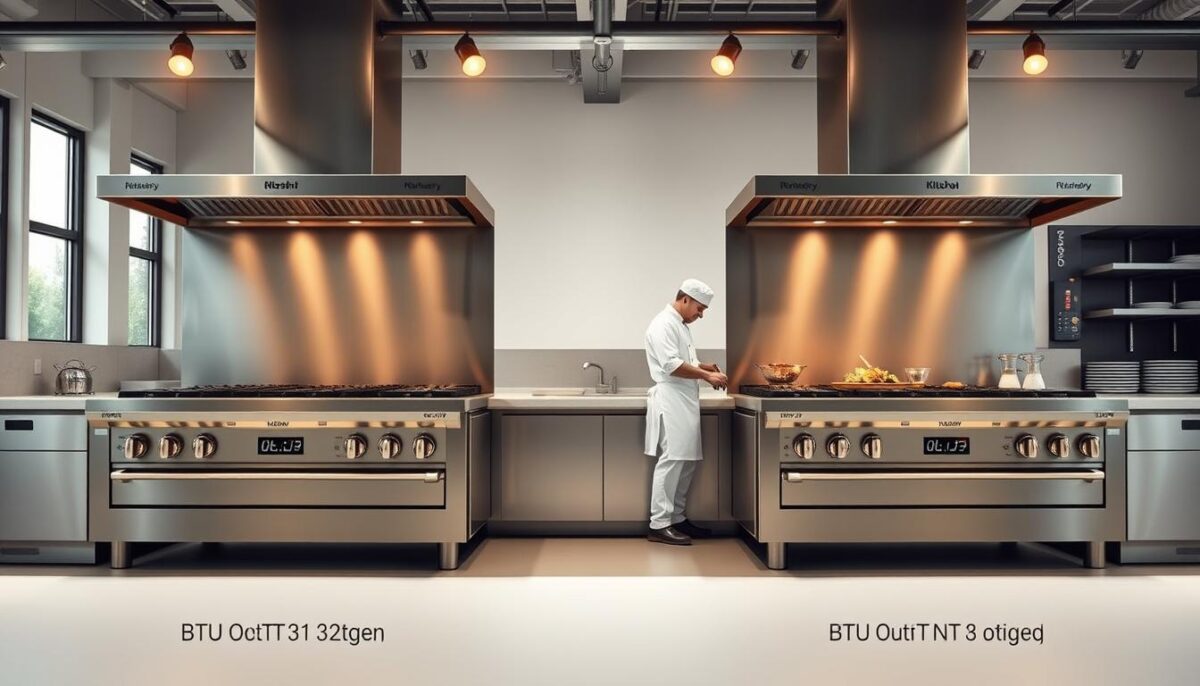
Vulcan’s Flame Control and Temperature Precision
Vulcan’s approach to performance focuses on precision flame control and temperature accuracy. Their ranges feature advanced burner designs that allow for precise control over flame intensity, enabling chefs to achieve the exact temperatures required for various cooking techniques. Vulcan’s Chef Pete Schellenbach highlights the importance of their Flame Safety Pilot System, which automatically shuts off gas to a module if a pilot light goes out, enhancing both safety and efficiency. Customers appreciate Vulcan’s ranges for their “instant control of heat from high to low” and the precision they offer for delicate cooking tasks.
However, some users have noted challenges with Vulcan’s flame control at very low settings, where the flame can become too weak. Despite this, Vulcan’s technology has evolved to improve precision and efficiency across recent models, making their ranges a strong contender for kitchens that value flexibility and control.
Range Configuration Options and Flexibility
In the world of commercial cooking, the ability to customize a range to specific needs is a game-changer. Both Southbend and Vulcan offer impressive configuration options that cater to different kitchen requirements.
Southbend’s Modular Design and Customization Options
Southbend’s commercial ranges are designed with modularity in mind, allowing customers to tailor their cooking equipment to their specific needs. While the exact number of configurations isn’t as high as some competitors, Southbend’s focus on quality and flexibility ensures that their ranges can be customized to fit various kitchen layouts and cooking styles. For instance, customers can choose from different burner configurations and oven options to create a gas range that suits their menu requirements.

Vulcan’s 300+ Possible Configurations
Vulcan takes configuration flexibility to the next level with their Endurance Range design, offering more than 300 possible configurations. According to Chef Pete Schellenbach, this modularity allows for tailored solutions that fit specific workflows and menus. Vulcan’s extensive range of cooktop options includes various burner configurations, griddle sizes, hot tops, and specialty cooking surfaces. Additionally, their base options include standard ovens, convection ovens, storage bases, and refrigerated bases, contributing to overall configuration flexibility.
| Feature | Southbend | Vulcan |
|---|---|---|
| Configurations | Multiple options | 300+ |
| Cooktop Options | Various burner configs | Multiple burner configs, griddles, hot tops |
| Base Options | Ovens, storage | Ovens, convection ovens, storage, refrigerated bases |
Customers like Aria Z from San Francisco have praised Vulcan’s configuration options for being compact and easy to integrate with existing equipment. The flexibility in Vulcan’s designs accommodates kitchen evolution over time, allowing for modifications as menu offerings and volume requirements change.
Oven Performance: Baking Quality and Consistency
When it comes to commercial cooking, oven performance is crucial for achieving consistent baking results. Both Southbend and Vulcan offer high-quality ovens, but they differ in their approaches to baking quality and consistency.
Southbend’s Convection Technology and Even Baking
Southbend’s ovens utilize advanced convection technology to ensure even baking. This technology circulates hot air throughout the oven cavity, eliminating hot spots and promoting consistent results. According to customer reviews, Southbend’s ovens deliver exceptional performance. For instance, one customer praised the oven’s ability to “pack a lot of power” and noted that it’s “extremely easy to use.” The convection technology in Southbend ovens is designed to provide precise temperature control, making it ideal for delicate pastries and complex baking tasks.
Vulcan’s Oven Temperature Control and Results
Vulcan’s ovens, on the other hand, focus on precise temperature control through advanced thermostatic systems. These systems maintain consistent temperatures throughout the cooking process, ensuring reliable results. Customers have praised Vulcan’s ovens for their performance, with one noting that their oven “works great for our purposes” and another appreciating the “lot of power” it packs. Vulcan’s ovens are designed to accommodate various baking needs, from delicate pastries to hearty roasts, making them versatile additions to any commercial kitchen.
| Oven Feature | Southbend | Vulcan |
|---|---|---|
| Convection Technology | Advanced convection for even baking | Precise temperature control |
| Temperature Control | Precise control for complex baking | Thermostatic systems for consistent temperatures |
| Customer Feedback | Praised for ease of use and power | Appreciated for reliability and performance |
In conclusion, both Southbend and Vulcan offer high-performance ovens that cater to different baking needs. By understanding the strengths of each brand’s oven technology, commercial kitchens can make informed decisions that enhance their baking quality and consistency.
“This is a tremendous addition to our kitchen. We’ve had it for a little while and it’s a true workhorse. We haven’t had any issues. It is extremely easy to use. Oven packs a lot of power. Griddle is perfection. Doesn’t take a lot to keep it clean as well.” – Jack L (Boston, MA)
Special Features Worth Considering
When choosing between Southbend and Vulcan for your commercial kitchen, it’s essential to consider the special features that set these brands apart. Both manufacturers offer a range of innovative technologies that can enhance cooking performance, safety, and efficiency.
Southbend’s Standout Features
Southbend’s commercial ranges are known for their robust construction and versatile cooking options. One notable feature is their modular design, which allows for customization to suit specific kitchen needs. Southbend ranges often include high-performance burners and ovens designed for consistent results. The brand’s focus on durability means their equipment can withstand the demands of a busy commercial kitchen.
Vulcan’s Innovative Technologies
Vulcan’s commercial cooking equipment is renowned for its advanced features, including the Flame Safety Pilot System. This system automatically shuts off gas to a module if it detects that a pilot light has gone out, enhancing kitchen safety. Vulcan is also committed to energy efficiency, having been an ENERGY STAR Partner of the Year for 16 consecutive years. Their ranges often feature modular designs with over 300 possible configurations, allowing for tailored solutions for different kitchens.
| Feature | Southbend | Vulcan |
|---|---|---|
| Modular Design | Yes | Yes |
| Flame Safety Pilot System | No | Yes |
| ENERGY STAR Certified | No | Yes |
| Configurations | Multiple | 300+ |
In conclusion, both Southbend and Vulcan offer compelling features that can benefit commercial kitchens. By examining these special features, you can make a more informed decision about which brand best suits your kitchen’s needs.
Price Point Analysis and Value for Money
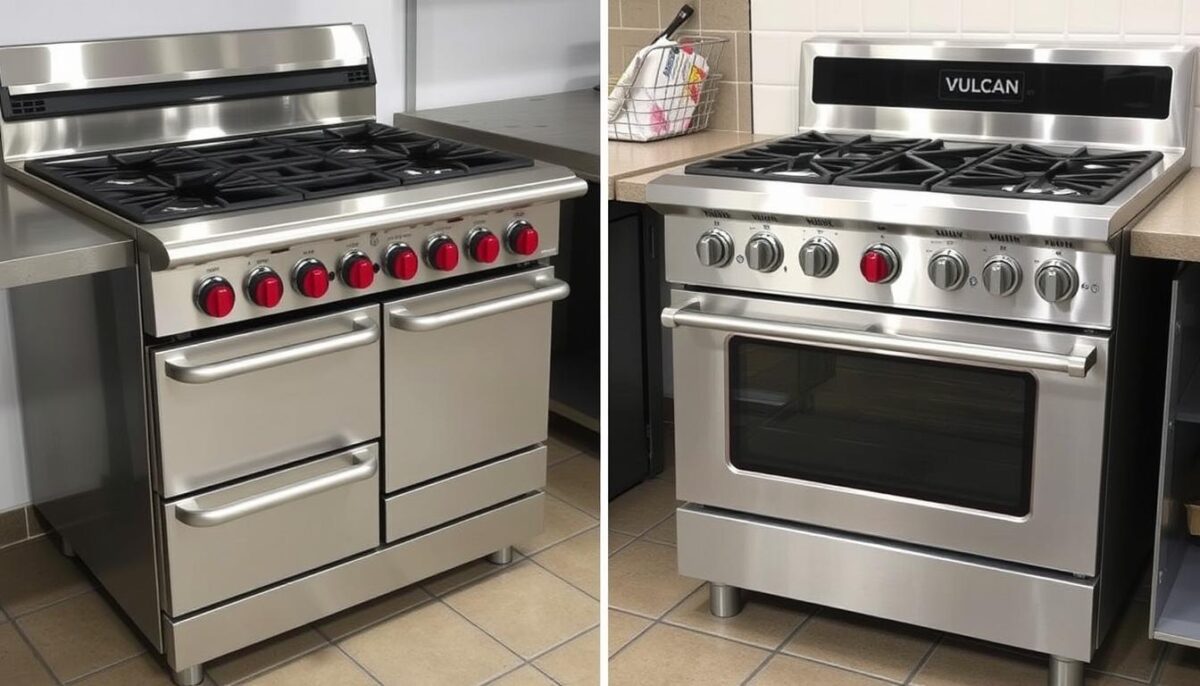
Restaurant owners often base their decision on the price of a commercial range, but there’s more to consider. When evaluating Southbend and Vulcan commercial ranges, it’s essential to look beyond the initial purchase price.
The price ranges of comparable Southbend and Vulcan models vary across different categories. I’ll compare the prices of entry-level restaurant ranges to premium heavy-duty ranges to provide a comprehensive view.
When analyzing the initial purchase price versus long-term value proposition, factors like durability, maintenance costs, and expected service life come into play. A heavy-duty range may be more expensive upfront but can offer significant long-term savings.
Configuration options and customizations also impact pricing. Both Southbend and Vulcan offer various configurations, and understanding the cost implications of these choices is crucial.
Warranty coverage is another critical aspect to consider. I’ll examine the warranty offered by both brands and how it factors into the overall value equation.
Energy efficiency differences between the two brands can also affect operating costs over time. Additionally, the resale value of both brands’ ranges on the secondary market is an important consideration for businesses that regularly update their equipment.
Real Customer Experiences: What Chefs and Restaurant Owners Say
The true measure of a product’s worth is often revealed through the voices of its users, which is why we’re examining feedback on Southbend and Vulcan ranges.
Southbend User Testimonials
Customers rave about Southbend ranges for their durability and performance. While specific testimonials aren’t provided for Southbend, users generally appreciate the reliability and quality these ranges bring to their kitchens.
- Reliability: Users value the consistent performance.
- Quality: The build and materials are often praised.
Vulcan Customer Feedback
Vulcan range users share their positive experiences, highlighting the products’ capabilities in busy kitchen environments.
“Excellent. It is reliable and powerful. Works exactly as described. High-quality build.” – Levi N (Atlanta, GA)
- Cooking Power: Customers like Lucas Z from San Francisco appreciate the ability to “do a lot of cooking” on these ranges.
- Ease of Maintenance: Users such as Jack L from Boston note that Vulcan ranges “don’t take a lot to keep clean.”
My Final Verdict: Which Brand I’m Choosing for My 2025 Kitchen
After thoroughly comparing Southbend and Vulcan commercial ranges, I’m ready to make my final decision for my 2025 kitchen upgrade. Both brands have impressed me with their quality and performance, but there are key differences that have swayed my choice.
My specific cooking needs and kitchen layout played a significant role in my decision-making process. As a serious home cook, I require a range that can handle high-volume cooking with precision. Both Southbend and Vulcan offer exceptional products, but Southbend’s modular design and customization options resonated with me, allowing me to tailor the range to my exact needs.
Upon examining the oven performance, I was impressed by the even baking and temperature control offered by both brands. However, Vulcan’s oven technology slightly edges out Southbend in terms of precision. Despite this, Southbend’s overall package, including its stainless steel construction and durability, made it my top choice.
In terms of burner technology and heat distribution, both brands excel, offering powerful gas ranges that can handle demanding cooking tasks. My decision ultimately came down to the specific model that best fits my kitchen’s configuration and my cooking style.
While neither brand is perfect, I believe Southbend offers the best balance of performance, durability, and value for my 2025 kitchen upgrade. I expect my chosen range to deliver exceptional performance over the coming years, and I’m confident in its ability to meet my cooking needs.
For readers with different requirements, I recommend considering your specific cooking needs and kitchen layout. If you prioritize customization and modular design, Southbend might be the better choice. If you value precision oven control, Vulcan is worth considering.
In conclusion, both Southbend and Vulcan are leaders in commercial range manufacturing, offering high-quality products that cater to various kitchen scenarios and cooking styles. As we move into 2025, I’m excited to see how these brands continue to innovate and improve their offerings.
FAQ
What are the key differences between a commercial range and a heavy-duty range?
Commercial ranges are designed for small to medium kitchens, while heavy-duty ranges are built for high-volume operations, offering more power and durability to handle demanding cooking tasks.
How do I choose between a gas range and an electric range for my kitchen?
I consider a gas range ideal for kitchens that require precise temperature control and high BTU output. Electric ranges, on the other hand, are suitable for kitchens with specific electrical infrastructure and cooking needs.
What are the benefits of a space saver oven in a commercial kitchen?
A space saver oven is perfect for kitchens with limited space, allowing for multiple cooking tasks to be performed in a compact footprint, while maintaining efficient cooking performance.
How do thermostatic controls enhance cooking performance on a commercial range?
Thermostatic controls provide precise temperature management, ensuring consistent cooking results, and reducing the risk of overheating or undercooking, which is critical in high-volume commercial kitchens.
What are the advantages of a stock pot burner on a commercial range?
A stock pot burner offers high BTU output, making it ideal for large-scale cooking tasks, such as cooking stocks, soups, or sauces, and is a valuable feature for commercial kitchens that require flexibility.
Can I customize my commercial range to fit my kitchen’s specific needs?
Yes, many commercial range manufacturers, such as Southbend and Vulcan, offer modular designs and customization options, allowing you to configure your range to meet your kitchen’s unique requirements.
How do I ensure my commercial range is energy-efficient and cost-effective?
I look for ranges with advanced burner technology, efficient oven insulation, and smart controls that help minimize energy consumption while maintaining optimal cooking performance.
